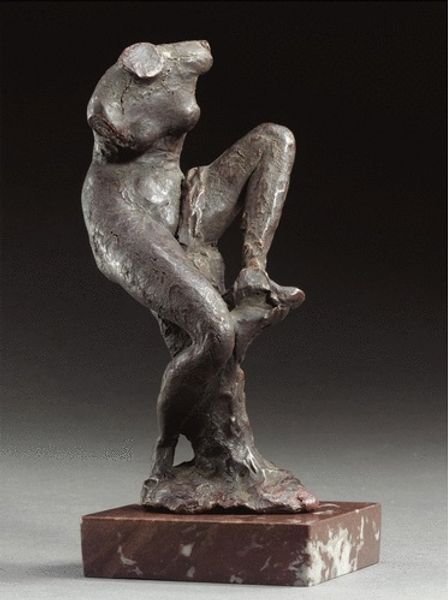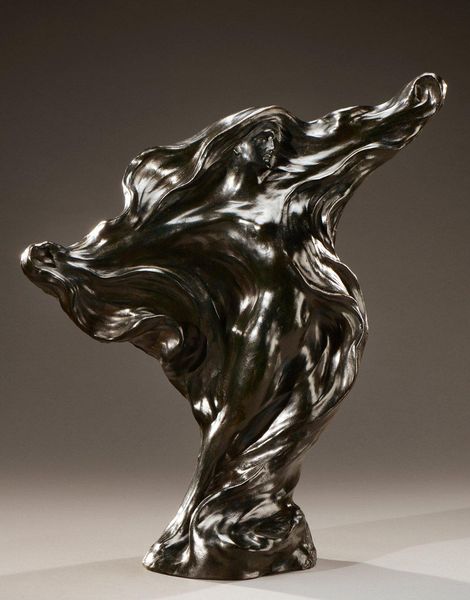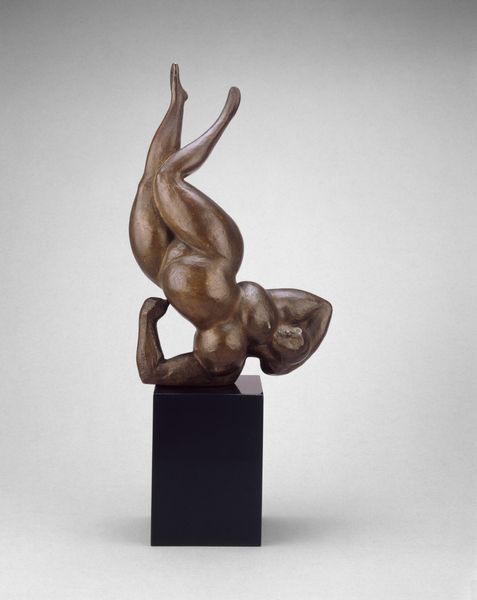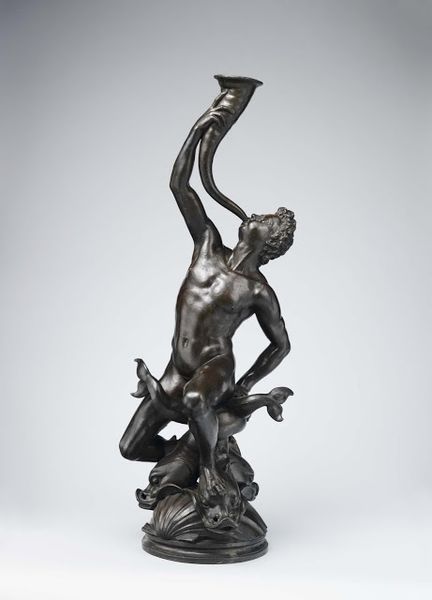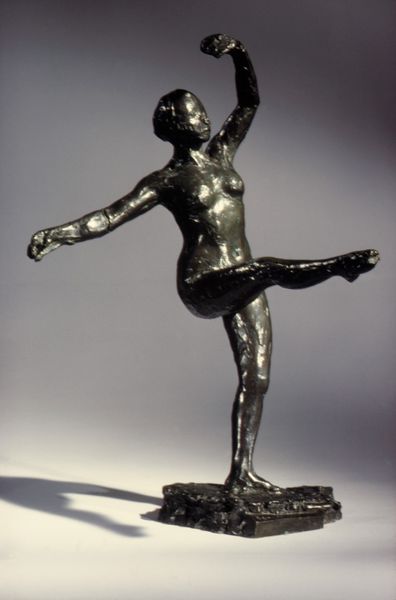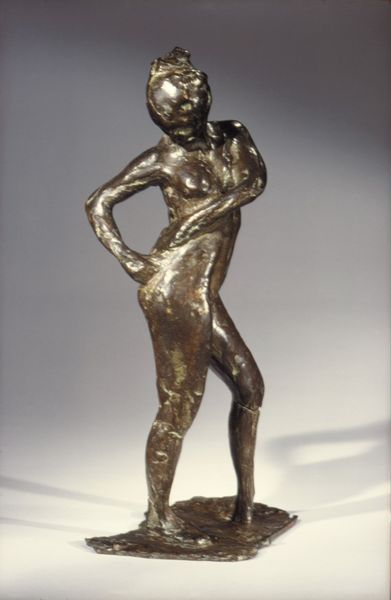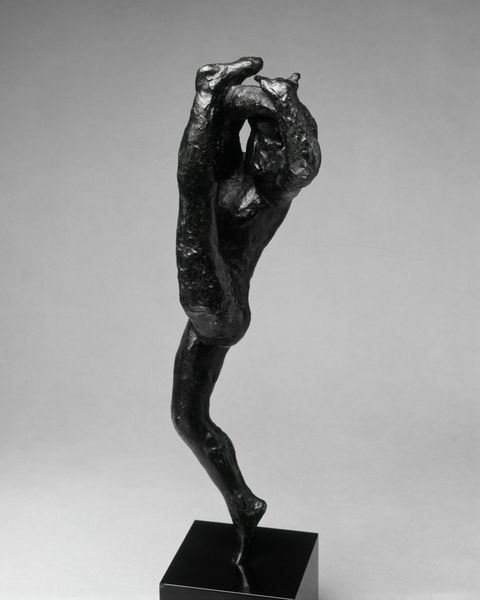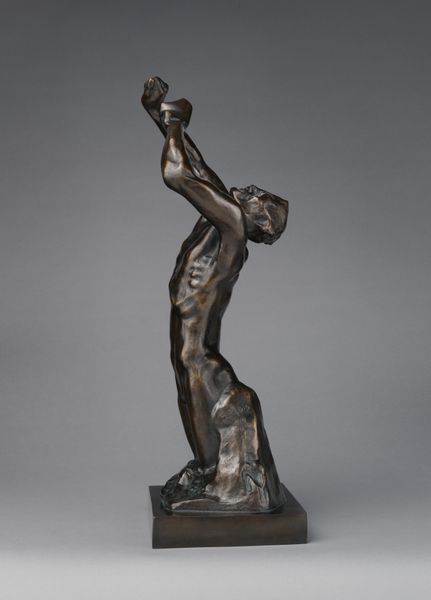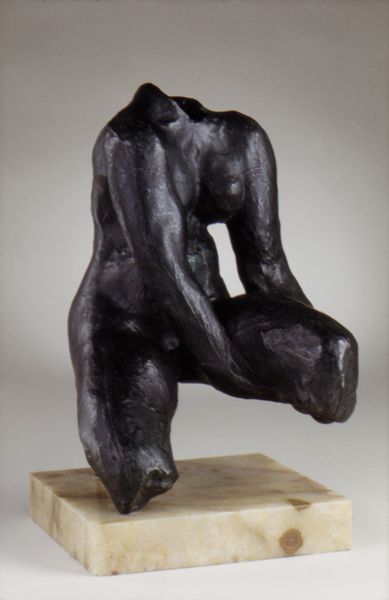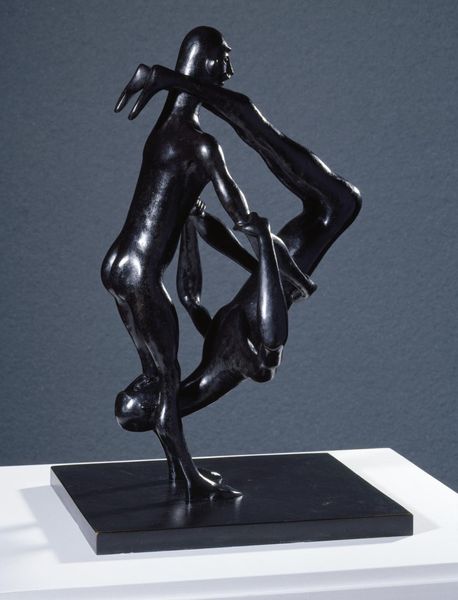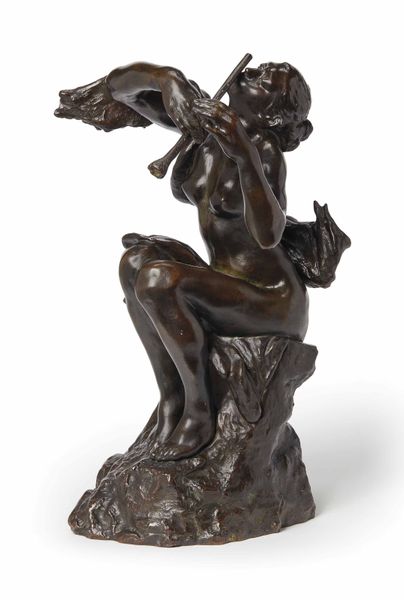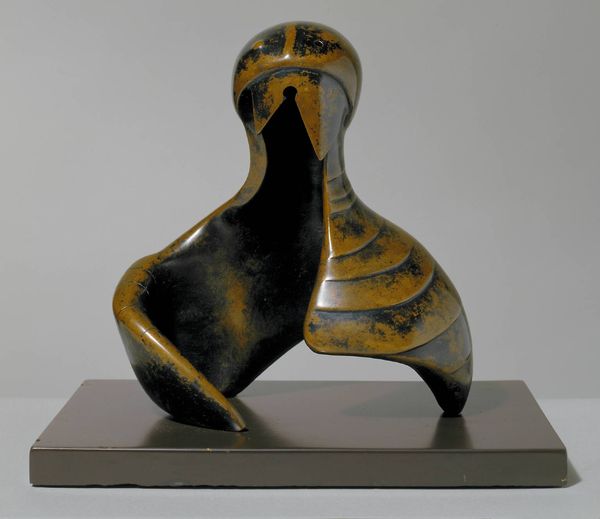
bronze, sculpture
#
portrait
#
bronze
#
sculptural image
#
figuration
#
sculpture
#
academic-art
#
nude
#
realism
Dimensions: 8 x 17 5/8 x 7 3/4 in. (20.32 x 44.77 x 19.69 cm)
Copyright: No Copyright - United States
Editor: Here we have Rodin's "Torso of Adele," circa 1880, rendered in bronze. It strikes me as simultaneously powerful and vulnerable, especially with its unfinished quality. What can you tell us about it? Curator: This sculpture invites us to consider the fragmented body, especially a female body, within a specific historical and social framework. Think about the late 19th century and the societal expectations placed on women's bodies, often objectified and reduced to their physical attributes. Rodin's deliberate focus on the torso, removing the head and limbs, forces us to confront those issues. What do you make of the bronze material in this context? Editor: I hadn't thought about that. Bronze seems to monumentalize the form, giving it weight and permanence, almost contradicting the fragility implied by its incompleteness. Does this have something to do with gender dynamics, too? Curator: Exactly. Rodin both elevates and dissects the female form, playing with the traditional artistic ideal while simultaneously subverting it. Is he celebrating the female body or contributing to its fragmentation? I wonder if it allows us to question the male gaze that often dominates artistic representation. What do you think about this piece as a counterpoint to traditional sculptures from antiquity? Editor: It certainly contrasts them. This isn’t the idealized, flawless form we often see in classical sculpture. There’s a sense of realism here, of a body marked by life, even in its incompleteness. I now see that the fragmented state is its most defining feature, as it makes the viewers consider societal power structures in a totally different light. Curator: Indeed. Considering art through a critical lens that engages with questions of power and representation is vital. Rodin's "Torso of Adele" may seem like a simple fragment, but it prompts deeper inquiry into how we perceive and portray the human body. Editor: This piece makes so much more sense when it is explained within this frame, rather than just an isolated object of beauty! Thank you.
Comments
No comments
Be the first to comment and join the conversation on the ultimate creative platform.


